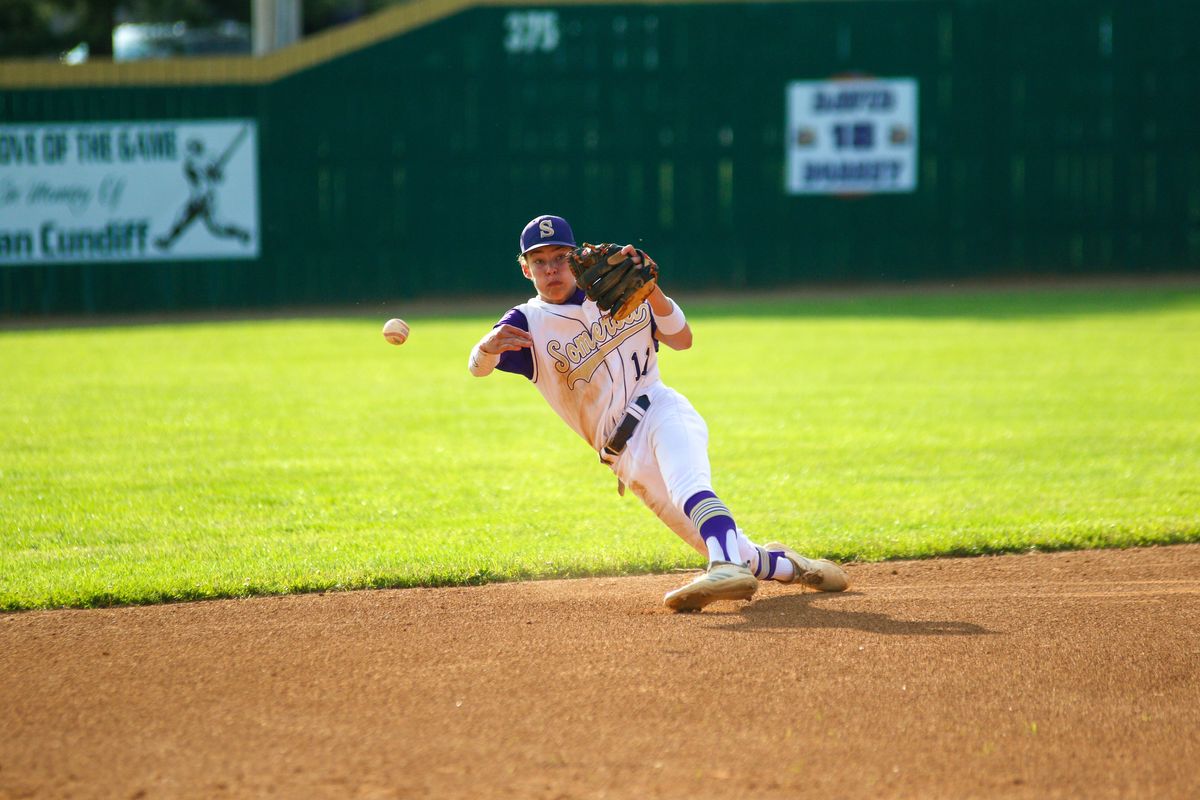PT 🦀 Issue 133 - It’s Baseball Season

Tonight, I dive into my first adult baseball season. It’s been 12 years since I played baseball back in college and I’m surprisingly not bad at it. If you’re considering picking up a sport from your younger days again, I highly recommend it, you’re probably not as bad as you think!
What I’ve learned from playing again is that I have a small anterior glenoid labrum tear (at least, I probably do). This is only trouble when my throwing mechanics get bunged up from trying to whip it too hard, so it’s generally not a big deal. But it got me thinking about baseball injuries and rehab and how I really don’t know too much about them. I figure that you don’t either. With 2.4 million kids playing baseball and 74% of them reporting some type of shoulder pain in the year, we should probably know more. So let’s learn more. Together. How sweet.
Let’s dive in!
First, Are You Injured?
The Gist - It’s just my opinion, but I think the standard patient-reported outcome measures for the arm and shoulder suck, especially for sports. I’m sorry, but the QuickDASH isn’t going to help a 16 year old baseball player. That’s why this group wanted to see if the Youth Throwing Score was a better measure. This outcome measure was designed by an interdisciplinary group of PTs, surgeons, ATs, and coaches to differentiate those playing with pain from those playing without pain or nor playing due to pain, and then respond to their improvement over time. It was specifically designed for youths 10-18, using a Flesch-Kincaid reading level set to approximately 4th grade and consists of 14 questions split into two parts. The first addresses demographic factors like sport and position, while the second part asks Likert-scaled questions about throwing and pain. Here’s a direct link to the questionnaire.
After surveying 223 baseball players, the researchers found that test-retest reliability was strong, internal consistency was good, responsiveness was good, and correlation between other surveys were good. Overall, this is a promising outcome measure for throwing injuries, similar to the University of Wisconsin Running Injury and Recovery Index in scope and design.
Tell Me More - Since this is a new measure, there’s not a lot more to tell, but I can try. You should know that this was only tested on male baseball athletes, not female softball players or players of other sports that require a bunch of overhead throwing like handball and water polo. We’re not sure if it’s an effective scale for them yet. If you’re going to use the scale, you should also know that it was designed to be completed by the pediatric population, specifically youths aged 10-18. That’s not to say that parents can’t complete it, but kids definitely can.
If you’re doing baseball rehab in general, you should also know about the Kerlan-Jobe Orthopedic Center shoulder and elbow score. This has been validated for adult throwers, specifically Major League Baseball players, but only preliminary research has been done with kids. Jobe is Frank Jobe, the physician who pioneered Tommy John surgery all those years ago, jsyk.
Paper? Got it.
Second, How Can You Get Better?
The Gist - We’re probably all familiar with return to running programs where you slowly build up mileage and time on your feet to return from injury. I’m working on one I designed for myself right now! And boy is it going slowly. If you’re going to be returning baseball players to the field after an arm injury, they should probably go through a similar program. Unfortunately and unlike running, there aren’t many of these programs out there. This group of PTs from Seattle Children’s Hospital wanted to change that, so they did. Publishing in the Journal of Pediatric Physical Therapy in 2019, they put together guidelines on returning little league, club, and high school level players to the diamond. In their investigation, they found that most throwing programs are far too aggressive and that “throws over 127ft rarely occur in competition,” but for some reason many return to throwing programs have excessive training at distances greater than that. They wanted to change that, so they did.
They present a few different return to throw programs, all available in the supplemental materials to the paper. They’re designed with emphasis on throwing distance, total number of throws, and rest days between throwing sessions in order to design an understandable program that can be easily administered at home. Here’s a link to a program designed for position players aged 9-12 years old. And another for those aged 13 and up.
They also developed key general guidelines for players that breaks the program down into simple steps that anyone can follow. According to their criteria, after the person is cleared to throw and can do so without pain, it’s expected to take 13 days to return for general injury, 27 for a ligamentous or growth plate injury, and 41 for any injury that required surgery.
Tell Me More - Other research has shown that youth sports coaches are woefully underprepared to understand and assess player injuries, so simple programs like this can be really helpful. One could print this out and hand it to the family to provide the coach, hopefully ensuring adherence.
In the development of this program, the researchers considered “current research and guidelines, age of the youth athlete, playing field dimensions, demands of the positions played, and type of injury.” Unfortunately for our purposes, they weren’t able to test this out longitudinally in any way, though I imagine that’s coming in the not too distant future. At worst, this is a good starting point for anyone working with a youth baseball or softball player and the general guidelines could probably be adapted to other overhead sports like handball and water polo as well.
Paper? Yupp Yupp Yupp.
And Third, Want to Know Everything?
The Gist - If you’re looking for a paper that takes you through pretty much everything you need to know about shoulder injury diagnosis, prevention, and treatment, it doesn’t exist. But if you want one that’s pretty good at all this stuff and really good at summarizing diagnostic test accuracy, this one is quite nice. It appears in the British Journal of Sports Medicine (how fancy!) and is a statement paper commissioned by the Danish Society of Sports Physical Therapy. They looked into 19 clinical tests and found specific ones that had high diagnostic accuracy for anterior instability, biceps-labrum complex injuries, and full subscap rupture. They also made a fantastic table with a huge list of the tests and their likelihood ratios and diagnostic accuracy. It’s great.
For those listed above, they found that a positive apprehension sign has a 17.21 positive likelihood ratio for anterior instability while apprehension + relocation has a 39.7 positive ratio. And if you don’t remember what a likelihood ratio is, you’re not alone I’m sure. It’s the true positivity rate divided by the false positivity rate. So in the case of the apprehension + relocation test, there are about 40 true positives for anterior instability for every false positive.
Thinking about SLAP tears, the paper found that the Biceps Load 2 test has a 92.1 positive predictive value and an 95.3 negative one. And for a review of those, positive predictive value is the probability that someone with a positive test actually has the thing and negative predictive value is the probability that someone with a negative test actually doesn’t.
And if you’re now tired of stats (like me), here’s a picture of a dog on a couch.

Tell Me More - This paper also gets into research on prevention of shoulder injuries in sport. They have a great table breaking down a few different programs in different sports, including “The Shoulder Control Programme”, the “FIFA 11+ Shoulder Prevention Program”, and the sleeper stretch + prone ER for prevention. The first two have a moderate quality of evidence to support their effectiveness while the last has very low quality. There’s more too, but it’s too much to get into here.
Lastly, there’s a big table ranking the effect size of a few different treatment programs on different shoulder injuries. The most effective were a shoulder-specific warmup and hyperthermia on those with subacromial impingement and supraspinatus tendinopathy and A-P mobilization of the GH joint in those with general shoulder pain. And yes, there’s a lot more, but again too much to get into today.
Paper? Have at it. Open access. Also, this author, Benham Liaghat, is one of my favorite authors and does quite a bit of work on shoulders, especially hypermobile ones. You can see more of their work here if that interests you.
And that’s our week! Do consider playing a sport again if you’ve been considering it. Sports are fun, and fun is fun. What’s not to like?
Have a great week,
Luke
Here's this week's bibliography:
- Ahmad, C. S., Padaki, A. S., Noticewala, M. S., Makhni, E. C., & Popkin, C. A. (2017). The Youth Throwing Score: Validating Injury Assessment in Young Baseball Players. The American Journal of Sports Medicine, 45(2), 317–324. https://doi.org/10.1177/0363546516667503
- Cisco, S., Miller Semon, M., Moraski, P., Smith, J., & Thorndike, C. (2019). Distance-Based Throwing Programs for Baseball Players From Little League to High School. Pediatric Physical Therapy, 31(3), 297. https://doi.org/10.1097/PEP.0000000000000625
- Liaghat, B., Pedersen, J. R., Husted, R. S., Pedersen, L. L., Thorborg, K., & Juhl, C. B. (2023). Diagnosis, prevention and treatment of common shoulder injuries in sport: Grading the evidence – a statement paper commissioned by the Danish Society of Sports Physical Therapy (DSSF). British Journal of Sports Medicine, 57(7), 408–416. https://doi.org/10.1136/bjsports-2022-105674
- Reintgen, C., Zeppieri Jr, G., Bruner, M., Horodyski, M., Waligora, A., Smith, M. S., & Farmer, K. W. (n.d.). Youth Baseball Caregiver Understanding of Safe Pitching Guidelines and Player Injury. International Journal of Sports Physical Therapy, 16(3), 807–815. https://doi.org/10.26603/001c.22532
